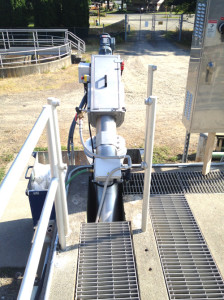Wastewater Bar Screens Guide

 The topic of wastewater filtration isn’t exactly a popular one, but in all actuality it is actually quite interesting. There are several components that go into wastewater treatment, a crucial system in our daily lives, and the use of bar screens is one such aspect. Learning more about this small but important tool can shed light on just how much work goes into giving you a clean and safe home, work place and overall way of life.
The topic of wastewater filtration isn’t exactly a popular one, but in all actuality it is actually quite interesting. There are several components that go into wastewater treatment, a crucial system in our daily lives, and the use of bar screens is one such aspect. Learning more about this small but important tool can shed light on just how much work goes into giving you a clean and safe home, work place and overall way of life.
Installation
Wastewater bar screens are fairly easy to install, and are a convenient and versatile tool, as any number of screens can be installed. The screens can also be sized appropriately to fit with an existing waterway, or be created anew as part of the construction of a new water treatment plant. These screens act essentially as small gates, and are assembled and installed usually by a team of professionals from the wastewater treatment facility.
Filtration
A wastewater bar screen is first and foremost used as a cleaning filtration system, to trap garbage and debris. These screens are actually the first level of defense, or first chance in a water cleaning system to trap and block such debris. As such, the screens are often installed around the center or start of a wastewater treatment plant. Some screens might also be used some yards away from the epicenter of the plant.
Construction
These bar screens are usually made of very strong metal, often steel, to hold up to the water pressure, which can sometimes be intense. The screens consist of vertical metal bars, which are usually spaced out one to three inches apart to pick up some of the larger objects and garbage that might pass through a city’s water system. Screens with bars closer together are meant to pick up smaller debris.
Designs
Wastewater bar screens come in a series of different designs, each crafted to service filtration needs depending on where the screens are going to be used. Some of these screens use automatic cleaning systems powered by electric motors and chains (see some examples on this wastewater vertical bar screen manufacturer’s website). Some others have to be cleaned by hand or mechanically, typically by using a heavy metal rake. The self cleaning screens are considered more modern and have become very popular.
Disposal
Once the screens have successfully filtered the water, something must be done with the refuse that has been collected. In this system, as objects are collected by the screen the water level will rise, so the items must be collected and disposed of. The refuse objects typically go to a trash center or land fill, and are usually picked up by hand.
The subject of wastewater filtration can actually be quite interesting, especially when you consider how essential it is to every day life. Water filtration supports literally the majority of life events, from cooking and showering to a night at a clean hotel. And wastewater bar screens are a key part of that process. It is amazing to think about how much power one simple tool can have on such a large and all encompassing system.
No Responses to “Wastewater Bar Screens Guide”
Trackbacks/Pingbacks
- Custom Carl - What are the motor characteristics for bar screens?

Leave a Reply